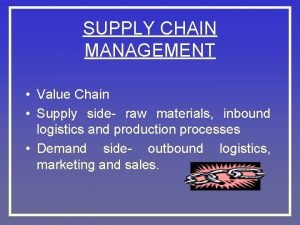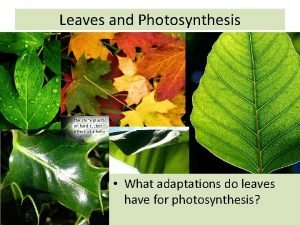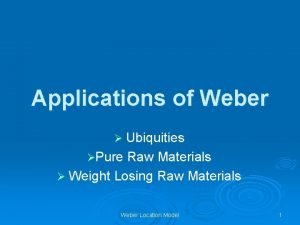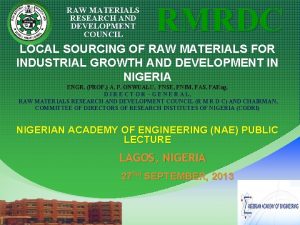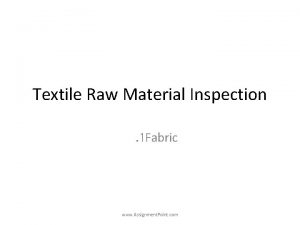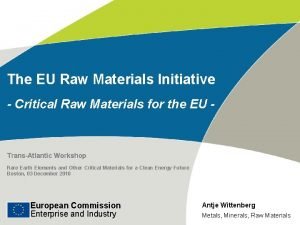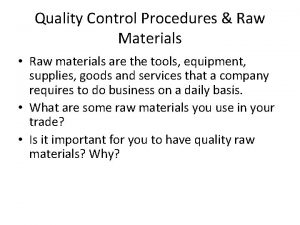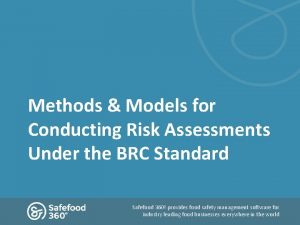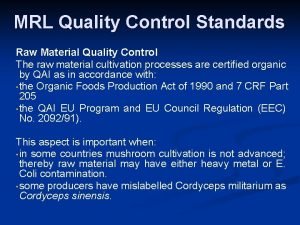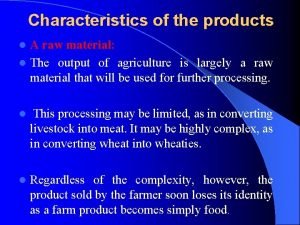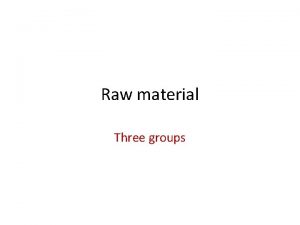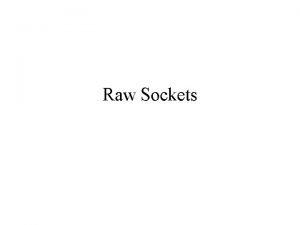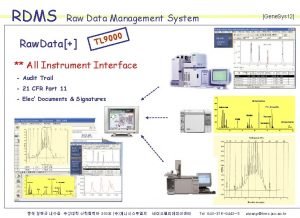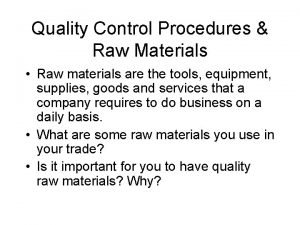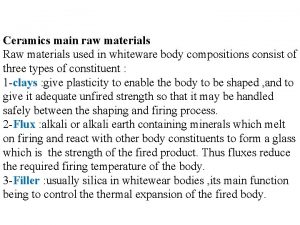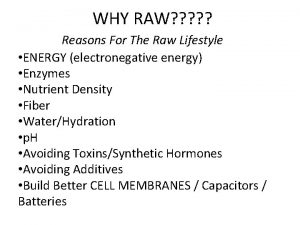SOIL SOIL Soil is the raw material that




























- Slides: 28

SOIL

SOIL • Soil is the raw material that makes everything possible. • Understanding your soil and knowing how to work it are fundamental to good gardening. • Understanding your soil enables selection of plants that will thrive in it. • Understanding your soil saves you money and avoids major disappointments. • Soil can be improved!

Perfect proportions

What is soil? A medium that can support plant growth made up of: • Minerals 40 – 60% • Organic matter 1 – 5% • Water 5 – 40% • Air 5 – 40% Provides anchorage, air, nutrients, water. Habitat for a range of organisms and micro-organisms

Formation of soil Mineral element derived from parent rock by: • Physical weathering – ice, rivers, T°changes, man. • Chemical weathering – acid rain, soil water dissolves minerals • Biological weathering – plant roots, burrowing animals. Organic matter derived from: • Plant remains • Animal remains

Formation of horizons

Soil profiles

Organic matter Topsoil Subsoil Parent material Bedrock

Topsoil Humus • Contains most OM • Dark in colour • Contains most soil organisms • Decomposed organic matter • Contains many plant roots • Holds onto nutrients • Dark in colour • Retains water • Ideally 30 – 60 cm deep • Most fertile, nutrient rich • Ideally small lumps/crumbs • Ideally well aerated

Subsoil Parent Rock • Little organic matter • Few soil organisms • Sandstone • Less fertile than topsoil • Granite • Accumulation of leached materials from above • Chalk etc. • Large lumps and less air spaces • Lighter in colour • Contains some roots • May have high water content but less available to plants

Soil types Dependent on: Characterised by: • Parent rock • Colour • Climate • Texture • Topography • Structure • Organisms • Mineral content • Time • Depth

Soil texture – determined by particle size

Soil particles and soil properties SAND feels rough. It has a large grain size and large pore spaces. Water drains through it quickly SILT feels smooth and silky. It has a medium grain size and medium pore spaces. Water drains through it less quickly. CLAY feels sticky or slick. It has a very small particle size. Water moves through it very slowly.

Properties and management of Sandy soils • Has very little structure • Low water holding capacity • Particles are inert – do not hold onto nutrients • Easy to work all year round • Warms up quickly • Add organic matter to increase water holding capacity and nutrient retention • Add thick layers of mulch and/or windbreaks to avoid erosion • Add fertilisers frequently in small quantities • Cultivate any time of year • Irrigate

Properties and management of silty soil • Holds a lot of available water • Structurally unstable • Prone to capping - crust on surface • Usually fertile. • Keep a coarse tilth to surface and do not overcultivate • Keep off ground when wet to avoid compaction • Cultivate just prior to planting • Mulch to prevent capping • Add organic matter to improve structure

Properties of clay soil • High water holding capacity • Sticky when wet • Poor drainage • Structure easily damaged - compacting • Shrinks and cracks as it dries • Slow to warm up • Cation exchange capacity - holds onto nutrients. Particles have a –ve charge and hold onto cations with a +ve charge e. g. Potassium, Calcium, Magnesium , making these nutrients available to plants, and preventing them from being leached out.

Management of clay soils • Add organic matter to improve structure • Add sand or grit to aid drainage • Cultivate in Autumn to allow frost to break clods • Keep off ground when wet to avoid forming pans or compaction • Add a thick layer of surface mulch • Add lime to flocculate and reduce acidity, thus encouraging soil organisms and bacteria which improve structure

Soil structure The way individual components are combined to form larger aggregates such as crumbs or clods §Soil structure depends largely on soil texture §Soil structure can be influenced by cultivation methods §Organic matter helps to bind soil particles into aggregates §The ideal structure is crumb structure, made up of small, rounded aggregates of 1 -5 mm. Why?

Soil structure

Soil Structure influences the percolation rate of water

Particle size and pore size – how texture influences porosity • The air/water balance depends on the distribution of pore size in the soil. • Pore space is filled with water or air. • As soil water increases, soil air decreases and vice versa.

Soil water Saturation All pores are filled with water during heavy rain or irrigation. Root function stops temporarily due to lack of oxygen. Soil water Field capacity Water held when gravitational water has drained away, usually 1 or 2 days after heavy rain ceases. Permanent wilting point Point at which a plant wilts and cannot recover its turgidity • Water is still present in the soil but is held so tightly that it is unavailable to plants. •

Soil moisture deficit • The water that is required to restore the soil from permanent wilting point to field capacity.

Soil water

Soil air • Needed for respiration • Aids in breakdown of organic matter • Occupies pores of the soil in exchange with water • Gaseous exchange between soil and the atmosphere is important as carbon dioxide content in soil is high due to release during respiration. • Compaction and waterlogging create anaerobic conditions

What happens in which soil? Sandy soil versus Clay soil 1. 2. 3. 4. 5. 6. Gravitational water Capillary water Hygroscopic water Loss of water by evaporation Workability Air

Soil structure can be improved

…and damaged
 Bayonet charge by ted hughes
Bayonet charge by ted hughes Tôn thất thuyết là ai
Tôn thất thuyết là ai Phân độ lown
Phân độ lown Chiến lược kinh doanh quốc tế của walmart
Chiến lược kinh doanh quốc tế của walmart Gây tê cơ vuông thắt lưng
Gây tê cơ vuông thắt lưng Block xoang nhĩ độ 2 type 1
Block xoang nhĩ độ 2 type 1 Tìm vết của đường thẳng
Tìm vết của đường thẳng Sau thất bại ở hồ điển triệt
Sau thất bại ở hồ điển triệt Thơ thất ngôn tứ tuyệt đường luật
Thơ thất ngôn tứ tuyệt đường luật Con hãy đưa tay khi thấy người vấp ngã
Con hãy đưa tay khi thấy người vấp ngã Thơ thất ngôn tứ tuyệt đường luật
Thơ thất ngôn tứ tuyệt đường luật Cosphatec
Cosphatec Raw material in supply chain
Raw material in supply chain What are the adaptations of leaf for photosynthesis ?
What are the adaptations of leaf for photosynthesis ? Pure raw material example
Pure raw material example Titanium dioxide usp fcc
Titanium dioxide usp fcc Rmrdc salary for corpers
Rmrdc salary for corpers Fabric textile raw material
Fabric textile raw material Critical raw materials
Critical raw materials On the basis of raw material
On the basis of raw material Quality control of raw materials
Quality control of raw materials Taccp risk assessment template
Taccp risk assessment template Raw material definition
Raw material definition Raw material standards
Raw material standards Characteristics of raw materials
Characteristics of raw materials Material and non material culture examples
Material and non material culture examples Can useful materials be harmful
Can useful materials be harmful What is real culture
What is real culture Geometrical symbol
Geometrical symbol












